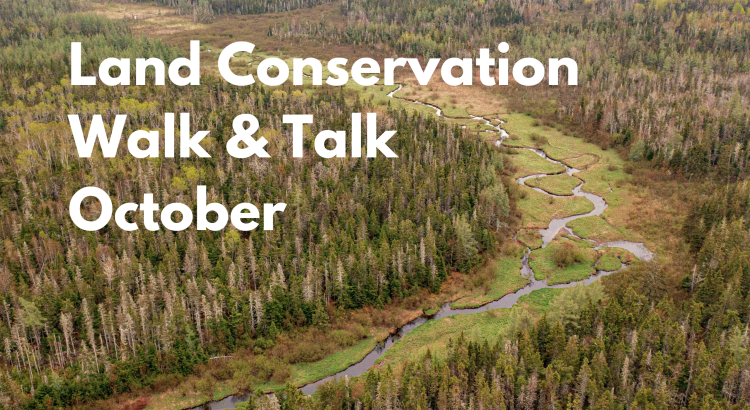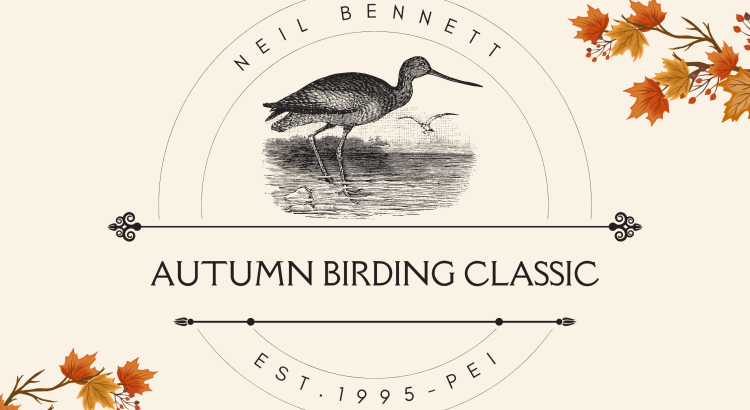Author:
Island Nature Trust Celebrates the Conservation of Over 10,000 Acres of Land in Prince Edward Island
Island Nature Trust (INT) is excited to announce that it has achieved a major conservation milestone by protecting over 10,000 acres of land in Prince Edward Island. This achievement marks a significant point in the organization’s ongoing efforts to protect and conserve the natural beauty and biodiversity of the Island.
Since its inception in 1979 by a small group of volunteers who saw the pressing need for conservation in the province, INT has worked tirelessly to conserve and steward ecologically significant land across Prince Edward Island. Over the past four decades, the organization has secured a network of 98 natural areas, covering more than 10,000 acres of land and protected a wide variety of habitats working towards the goal of protecting 10% of the Island. These natural areas including wetlands, forests, grasslands, and shorelines, are home to a diverse range of flora and fauna, including many endangered and threatened species that rely on these ecosystems for their survival. The protected areas also support a range of important ecological functions that benefit our Island communities and play a crucial role in purifying air and water, storing carbon, and preventing soil erosion.
“The acquisition and protection of over 10,000 acres of land is a significant achievement for INT, and we are incredibly proud of what we have accomplished,” said Bianca McGregor, Executive Director of Island Nature Trust. “However, it does not end here. 10,000 acres is similar to the size of Charlottetown city limits, and we are aiming to increase this number substantially by the end of the decade.”
Bianca adds ” PEI’s population is growing and our rural landscapes are under increased pressure from residential development, resource use, and climate change. It is important to note that most of this achievement was accomplished in the last few years, highlighting our accelerated efforts and a race-against-time to protect what little ecologically diverse land remains in PEI.”
“This success was accomplished in no small part to the dedication and hard work of our donors, staff, partners, and volunteers, who have worked tirelessly to protect the natural beauty of Prince Edward Island. However, to meet our long-term goals of placing 10% of the province under protection, we need Islanders to continue their support by donating suitable land for protection or cash to INT.”
In the past year, INT has protected 29 Natural Areas, totalling over 2,405 acres of ecologically significant land. In a province where 87% of the land is privately owned and population growth, development, and climate change continue to exert pressure, this recent success highlights INT’s unwavering strategic commitment to permanently protect and secure large contiguous natural areas throughout PEI.
An example of this strategic objective is the recent donation of 15 acres by Bruce and Patricia Craig in Old Bedford Rd, lifting INT over the 10,000-acre mark. The generous contribution expands connectivity for wildlife by serving as an addition to the existing 100-acre Blooming Point Woodland Natural Area, which was acquired by INT in 1999. This connectivity strengthens the conservation efforts and promotes the conservation of the surrounding ecosystems.
The donated property’s ecological importance further reinforces the significance of INT’s approach. The presence of a freshwater marsh, forested wetland, and riparian zone along the Trout River, combined with a diverse array of micro-ecosystems, underscores the property’s ecological richness. This varied habitat supports a wide range of flora and fauna, providing valuable resources for numerous species and promoting biodiversity. The property also contains ideal habitats for species such as the endangered Canada Warbler and the Olive-sided Flycatcher.
By actively focusing on creating connected and expansive natural areas, INT ensures the long-term viability of ecosystems and the conservation of vital ecological processes. These tracts of protected land allow for the conservation of intact ecosystems and the sustainable management of natural resources. INT’s dedication to bringing such areas into protection contributes to maintaining healthy populations of wildlife, conserving critical habitats, and safeguarding the province’s natural heritage.
Reaching the milestone of 10,000 acres demonstrates INT’s effectiveness in engaging donors, landowners, and the community at large to contribute to the conservation cause. Each donation, like the one made by Patricia and Bruce Craig, plays a crucial role in realizing INT’s mission and contributes to the collective effort of protecting Prince Edward Island’s natural heritage for future generations of nature and people to come.
The protection of these properties would not have been possible without significant contributions from our individual donors, the Provincial government of PEI, MapleCross Fund, and Environment and Climate Change Canada.
Read more about the Craig’s pivotal donation here.
Images
Available at this link: https://islandnaturetrust.box.com/s/a573iu9xtbaglhu8fq8smf17se8mopaj
About
Island Nature Trust is a membership-based, non-government, Canadian charity dedicated to land conservation in Prince Edward Island since 1979.
In a race against time, our mission is to protect and steward forever a network of natural areas and wildlife habitats across PEI and bring together those who care about protecting PEI’s natural legacy for future generations.
We are a key provider of technical, science-based knowledge on land stewardship and wildlife in PEI for landowners, governments, and partner environmental groups.
We provide mentorship and employment opportunities to people committed to land stewardship, conservation research and wildlife monitoring who will continue building on the long tradition of Island Nature Trust as the premiere land trust on the Island.
Visit our website: www.islandnaturetrust.ca
Facebook: www.facebook.com/islandnaturetrust
Instagram: www.instagram.com/islandnaturetrust/
LinkedIn: www.linkedin.com/company/island-nature-trust
Media Contact
Island Nature Trust
Ben Russell – Communications & Marketing Manager
902-892-7513
ben@islandnaturetrust.ca



Island Nature Trust Celebrates the Conservation of Over 10,000 Acres of Land in Prince Edward Island
Island Nature Trust (INT) is excited to announce that it has achieved a major conservation milestone by protecting over 10,000 acres of land in Prince Edward Island. This achievement marks a significant point in the organization’s ongoing efforts to protect and conserve the natural beauty and biodiversity of the Island.
Read more
INT Expands its ‘Corridors of Connectivity’ Mission with Generous Land Donation in Blooming Point
Island Nature Trust (INT) has reached a major milestone in its conservation efforts. With the recent donation of 15 acres by Bruce and Patricia Craig (pictured), INT’s total acquisitions of ecologically important land now exceeds the 10,000-acre mark. This contribution located in Blooming Point on the Old Bedford Road, not only expands connectivity for wildlife, but also strengthens conservation efforts and promotes the preservation of surrounding ecosystems.
Read more
INT seeks donations from PEI landowners through its Add A Patch campaign
INT’s Add A Patch campaign launches with the hope to reach the goal of protecting10 per cent of PEI’s ecologically significant land, through generous donations of land.
Since 1979, INT has been steadfast in its mission to acquire and protect ecologically significant land on Prince Edward Island. This is particularly challenging because 87 per cent of P.E.I. is privately owned, making it the highest per capita rate in Canada.
This disproportionate ownership is the by-product of a 1770’s colonial land grab, where PEI, known then as the Island of St. John, was mapped and divided into 67 lots and townships. Hundreds of years later, these policy decisions continue to impact conservation efforts and stymie the Island Nature Trust’s overall goal of protecting 10 per cent of the Island’s land.
Where is Island Nature Trust located?
Our office and headquarters location is:
112 Longworth Avenue,
Charlottetown, Prince Edward Island,
C1A 7K4
What is Island Nature Trust’s Mission?
What does Island Nature Trust do?
How to Donate Cash: Donations & Donating for Conservation
Considering donating cash to Island Nature? Check out our current fundraising campaigns…


